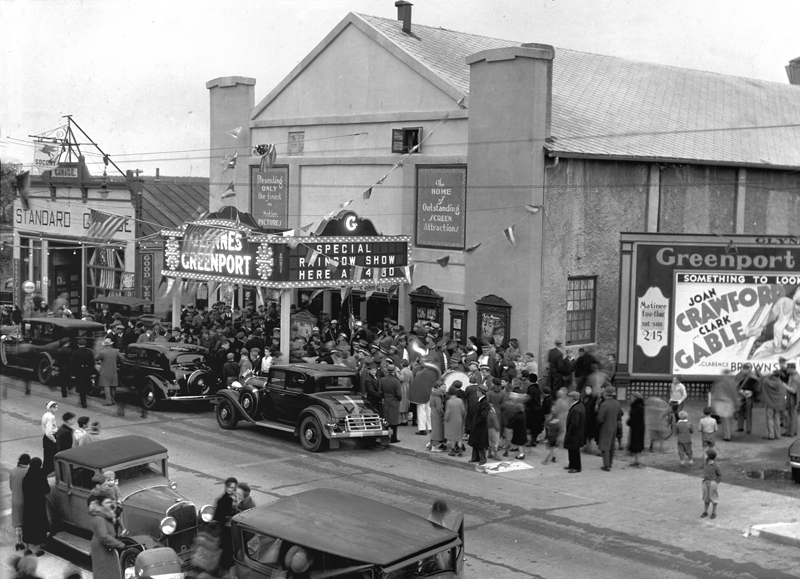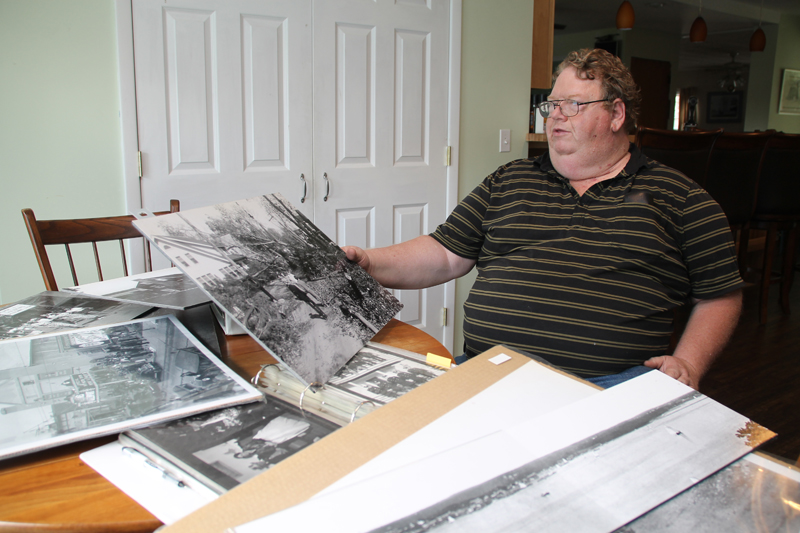North Fork photo collection offers a glimpse into the past

It’s not every day you get to travel back in time.
But thanks to an extensive collection of historic photos restored and preserved by East Marion photographer Mike Richter, you can get pretty close.
Mr. Richter’s archives, which date back to the 1930s, offers a glimpse of the history of the North Fork, especially Greenport.
One photo depicts that hamlet’s Main Street in a time when horse-drawn carts rumbled down dirt roads and drains were inverted in the middle of the street to prevent horses from stepping in them and getting injured. Another photo taken from nearly the same spot shows 1950s Greenport with automobiles and paved roadways.
“It’s a remarkable collection,” said Gail Horton, president of Stirling Historical Society in Greenport. “It’s a wonderful resource … It’s almost like a mystical thing. You do get that connection.”
For nearly 30 years, Mr. Richter has painstakingly restored, documented and cared for the thousands of photos in his collection.
“Photography has always been my life,” he said. “I feel I have to maintain [the collection] because eventually someone will have a use for it.”
Mr. Richter bought the collection in 1988 from his wife, Kathy’s, father, John Vail, who also sold Mr. Richter his photography shop in Greenport Village. Mr. Vail, who took many of the photos in the collection himself, had previously purchased the rest of the photos from Hugo Frey, another historic Greenport photographer.
Almost all of the photos were taken by professional photographers. They were used in advertisements, as part of police investigations, or for real estate listings, Mr. Richter said.
Even family photos like portraits and wedding shots were taken by professionals. That’s because photography in the 1930s and 1940s was a “complex process.”
“Most of the time when photography was done in this period, it was done for a reason,” Mr. Richter said. “You couldn’t just go out and take a snapshot. You couldn’t do it casually.”
For years, Mr. Richter kept his collection at his Greenport store. But since he’s now moving his studio into his East Marion home, the photos have come along, too. He makes the photos available for those who want to see them. He’s sold some of the prints to local businesses and let historical societies borrow others.

Occasionally, someone in Greenport will come to him asking for a wedding photo or an old portrait of a great-grandfather and Mr. Richter will scour through the large chunk of the collection that “doesn’t appeal to the mass public,” he said.
Among the photos is a black-and-white group shot of several people around a table at some kind of dinner or event. When Mr. Richter found the photo, he was shocked to find someone familiar sitting near the left side of the frame: his father, Ernest.
It’s those sort of ties to the North Fork’s past that makes the collection special, Ms. Horton said, noting that much of what is depicted in them has since been lost to new development.
“The downtown has changed so much,” she said.
Even from the 1980s, she said, “Things have radically changed.It stuns people and it really gives them a concept of the development of the area and where we’ve been and where we’re going.”
Click below for more photos, all of which are courtesy of Mike Richter’s Historical Collection.
Photo Caption (above): This 1934 photo shows the old Greenport theater, which was presenting a special show for Rainbow, a sailing ship captained by a Greenporter who won the America’s Cup that year. The building was blown down by the Long Island Express hurricane four years later. It was replaced with the current building in 1939.








